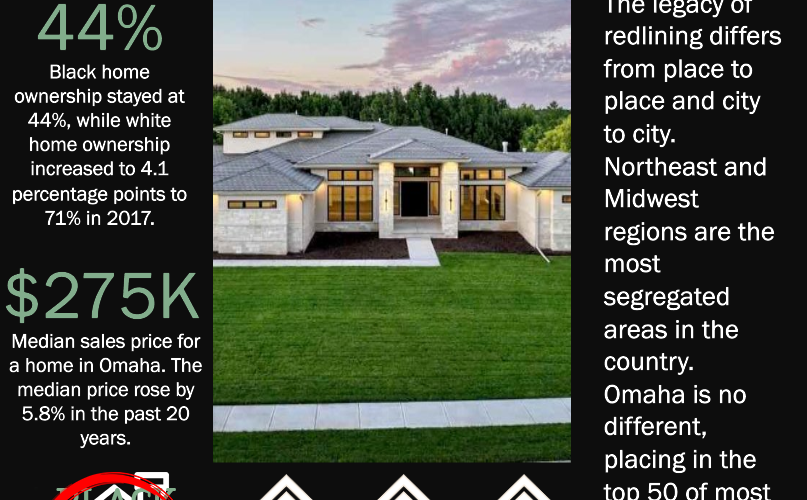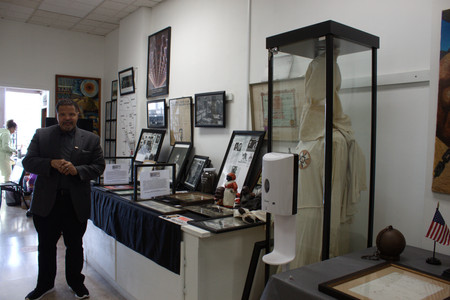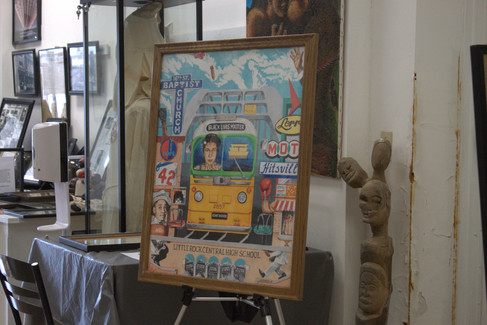A Deep Scar: Redlining's Grasp on North Omaha; Through The Eyes of History
- Paulina Mayorga
- Nov 30, 2024
- 3 min read
Updated: Dec 10, 2024
Omaha is a bastion of culture and community in Nebraska, but where did it all begin? At the root of it all is North Omaha, the "cradle of culture" for the metro area. “North Omaha’s history Is the most important history of any community in the entire city,” says Adam Fletcher Sasse, a North Omaha historian and advocate. “Without North Omaha, the city of Omaha would have failed and never come to exist in the way that it has.”
Sasse is a Nebraska native who grew up in the suburbs of North Omaha. He has written 9 books and published over 600 articles on North Omaha, and more, all of which can be found on his website. Sasse has long advocated for change in the Omaha community. Growing up in North Omaha shaped his perspective - he witnessed redlining and its effects, having an outsider’s perspective as a white kid in a predominately black school. Sasse's words underscore a truth often overlooked in the broader narrative of Omaha’s development: the city’s economic growth and cultural richness were built on the backs of North Omaha’s African American community.
During the mid-20th century, North Omaha was a prosperous hub of black businesses, culture, and innovation. From jazz clubs on North 24th Street to thriving Black-owned businesses, the community showed resilience and had a thriving community, despite ongoing systemic oppression. There were racial tensions in Omaha due to lynchings that served as a catalyst for the outbreak of riots and protests, which ended with local businesses closing due to reasons such as disinvestment or sustaining damage from riots.
Despite its foundational role in Omaha’s development, the communities in redlined areas have faced persistent challenges rooted in historical discrimination, systematic inequality, and economic struggles. Redlining policies, loan inequities, and racial discrimination impacted North Omaha’s housing economy, making homeownership a challenge. Contemporarily, the rate of homeownership for black people is 44%, while for the white/caucasian population that number is 74%.
The “lowest favorability tool” was a methodology used by real estate agents in the foundational days of redlining to classify certain areas with high crime, low equity, infiltration by “undesirables”, low homeownership, vandalism, inadequate maintenance levels, and more. All of these served to steer white buyers towards areas without said qualities while keeping African Americans and minorities in one place. In North Omaha, the contrast is clear when compared to West Omaha’s housing state and despite the end of redlining policies decades ago, North Omaha’s community was left with a profound scar that plays a huge role in various housing affairs.
“That’s pretty much what redlining was and what it did, it didn’t matter your income, it didn’t matter your education level, but if you were black or brown that was gonna be your limitation.” Said historian Eric Ewing, Executive Director of the Great Plains History Museum. Ewing has lived in Omaha his entire life and he is a business owner and historian of the North Omaha community. He has extensive knowledge of black history in Omaha and gives regular guided tours at the Great Plains Black History Museum. The Great Plains History Museum is home to local artifacts, trophies, artwork, and tokens of accomplishments of African American figures of Omaha. Most notably, the Heisman trophy of Johnny Rodgers can be found here, one of only three winners hailing from Omaha.

The museum sits just across the street from The Omaha Star, a newspaper that has a proud history of being led only by black women as editors-in-chief. Founded by Mildred Brown and her husband Walter, it has been running nonstop since 1938. Right next door, The Union for Contemporary Arts Gallery displays various African American art exhibits and is a space for local art classes and workshops.
Mr. Ewing explains that as Omaha expanded west, systemic policies such as redlining funneled resources away from North Omaha, directing them to predominantly white neighborhoods. Infrastructure decisions like the placement of the North Freeway further fractured the community, physically dividing neighborhoods and displacing families.
He recalls how the construction of the freeway ran through his great aunts and grandparents' homes.
Despite unacknowledged barriers, North Omaha remains a cultural and historical pillar that continues to thrive despite the odds. Institutions like the Great Plains Black History Museum, the Union for Contemporary Art, and the Omaha Star highlight the community’s rich legacy and ongoing contributions. Advocates like Mr. Ewing and Mr. Sasse help to keep the community’s history alive and are a voice that brings the issue to light.
Redlining and segregation are still present in the metro area, even if not within the written law itself. Omaha has a way to go; however, Sasse and Ewing are two of many seeking to highlight the importance of talking about the uncomfortable to move forward.
INFOGRAPHICS
GREAT PLAINS BLACK HISTORY MUSEUM PHOTO GALLERY


















Comments